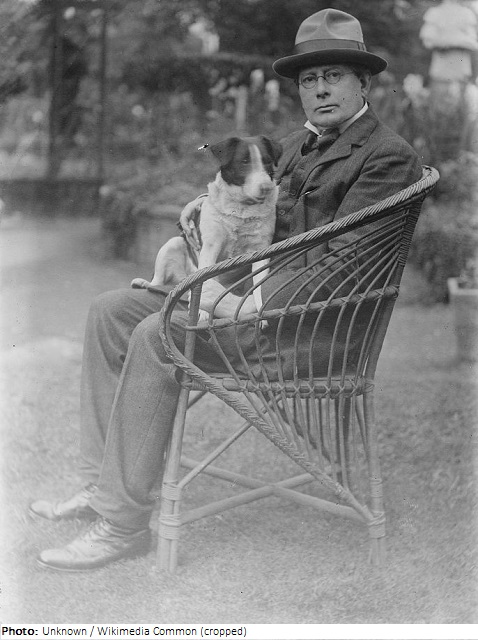George Frampton

Biographical information
| Roles | Referee |
|---|---|
| Sex | Male |
| Full name | George James•Frampton |
| Used name | George•Frampton |
| Born | 18 June 1860 in Lambeth, England (GBR) |
| Died | 21 May 1928 in London, England (GBR) |
| Title(s) | Sir |
| NOC |  Great Britain Great Britain |
Biography
Sir George Frampton entered the Royal Academy schools in 1881 and in 1902 became a full member of the Academy. His first exhibited work was “Socrates Teaching the People” in 1884.Three years later he won a travelling scholarship and worked in Paris before going on to win gold and silver medals, and other honours, for his works in Germany, Belgium, Spain and the United States. His most coveted honour, however, was the Médaille d’Honneur at the 1900 Paris Exposition.
Frampton went on to produce some magnificent monuments and statues of Queen Victoria, which could be found in various towns and cities around England, and also as far afield as Calcutta and Winnipeg. Statues of Queen Mary were seen in Calcutta and Delhi, and he also produced portrait busts of King George V and Queen Mary for London’s Guildhall. Two of Frampton’s best known works, however, were the Edith Cavell Memorial in London and the statue of Peter Pan in Kensington Gardens.
George Frampton was knighted in 1908 and he went on to hold some important posts like president of the Royal Society of British Sculptors. He was also a member of the Royal Society of Fine Arts in Milan, and the Académie Royal de Beaux Arts in Antwerpen. Frampton’s son Meredith gained a fine reputation as a painter and etcher, with works displayed at the Tate Gallery, National Portrait Gallery, and Imperial War Museum.
Referee
| Games | Sport (Discipline) / Event | NOC / Team | Phase | Unit | Role | As | |
|---|---|---|---|---|---|---|---|
| 1924 Summer Olympics | Art Competitions |  GBR GBR |
George Frampton | ||||
| Sculpturing, Open (Olympic) | Final Standings | Judge |
Errata
DOB also seen as 16.06.